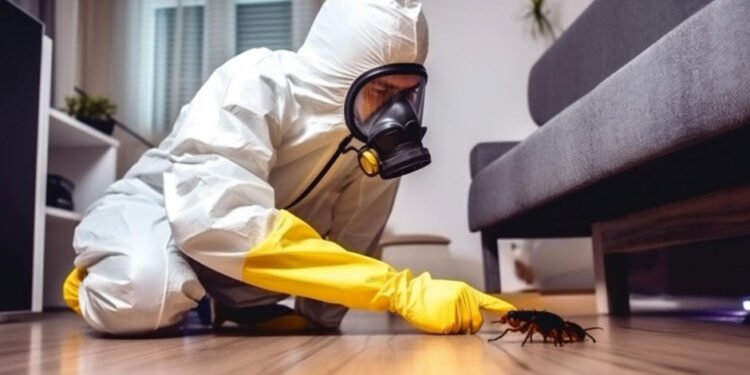Pests can sneak into homes faster than a forgotten cup of coffee can grow mold. One day, everything looks fine, and the next, there’s a mysterious trail of breadcrumbs—or worse, droppings—pointing to an unwanted guest. Whether it’s ants marching like a tiny army, mice hosting midnight feasts, or termites turning wood into dust, knowing the signs of an infestation can save time, money, and headaches. So, if pest-proofing your home has ever been on the radar, it’s worth knowing what to look for. Also check: Mid-Pacific Pest Control Oahu
Uninvited Guests Leave Evidence
Pests, as stealthy as they try to be, leave clues behind. Droppings are a tell-tale sign. Rodents, for instance, leave behind pellet-shaped droppings, while cockroaches offer smaller, pepper-like specks. Then there are grease marks or smudges—especially near walls or baseboards where mice scurry. A closer look around hidden nooks can reveal chewed wires, gnawed furniture, or even holes in cereal boxes. It’s like they think your pantry is an all-you-can-eat buffet.
If there’s a peculiar musty or sweet smell lingering, it could be pests signaling their presence. Rodents, for example, have a distinct musky odor, while cockroaches smell oddly sweet. These smells might be faint at first, but they tend to grow stronger as the infestation worsens.
Listen for What You Can’t See
Sometimes pests are better heard than seen. Ever been lying in bed, only to hear faint scratching or scurrying noises in the walls or ceiling? That’s not the house settling—it’s likely mice or rats having a party. Termites, though quieter, make soft clicking noises as they chew through wood. Even if the pests remain invisible, their sounds betray them. Paying attention to these subtle hints can help identify a problem before it escalates.
Watch Out for Structural Damage
Pests don’t just visit; they move in, redecorate, and destroy. Termites, for instance, leave behind hollow-sounding wood or bubbled paint. They’re notorious for weakening wooden structures, often making themselves known only when it’s too late. Rats and mice, on the other hand, chew through insulation, electrical wiring, and even plastic. Beyond being destructive, they’re fire hazards—frayed wires from rodent activity have been linked to house fires. And let’s not forget carpenter ants, which hollow out wood like tiny demolition crews.
Windows and doors sticking or floors warping could also signal damage caused by pests. While those signs might seem minor at first, they’re often indicators of bigger issues lurking just out of sight.
Outdoor Clues That Signal Trouble Inside
The yard often reveals what’s happening inside. Burrowed holes around the foundation, nests made of shredded materials, or ant hills near the house are all red flags. Piles of discarded wings could mean termites have taken up residence after a swarm. Even trees near the house can be a problem. Dead or hollowed-out branches are often playgrounds for pests like carpenter ants and can provide easy access to the house.
Keep an eye out for wasp nests under eaves, in sheds, or nestled in trees. While not exactly an “indoor” infestation, wasps can become aggressive and move closer to entryways, creating chaos whenever someone ventures too close.
The Subtle Signs of Pest Presence
Not every pest problem announces itself with dramatic evidence. Bed bugs, for example, are masters of stealth. Tiny rust-colored stains on sheets, itchy bites that appear in clusters, or faint specks of blood after waking up could mean these unwanted guests have moved in.
Similarly, moth infestations might not be noticed until sweaters have holes or pantry items are webbed with fine silk threads. Their presence is subtle, but the damage is unmistakable.
Prevention Beats Cure Every Time
Spotting an infestation is one thing; stopping it before it happens is even better. Sealing up cracks, keeping food in airtight containers, and maintaining a clean home are simple but effective strategies. Regularly checking hidden areas—like the backs of cupboards, basements, and attics—can also prevent small issues from snowballing into bigger ones. And while DIY solutions can handle minor problems, serious infestations call for professional help.
When in Doubt, Call the Experts
Sometimes, no amount of vigilance can prevent an infestation. Pests are resilient, adaptive, and persistent. That’s where pest control professionals come in. They don’t just eliminate the problem; they pinpoint its root cause, ensuring it doesn’t come back. Plus, they’ve got access to tools and treatments that aren’t available over the counter.
Pests may be inevitable, but living with them doesn’t have to be. Armed with these signs, it’s easier to stay one step ahead, turning your home back into the safe, cozy haven it’s meant to be. Because when it comes to pest control, a little knowledge—and quick action—goes a long way.












